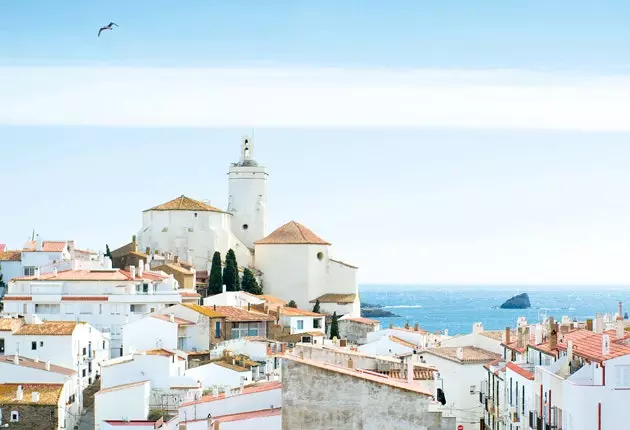
Cadaqués and Cap de Creus
Before Demi Moore or Jennifer López left the world open-mouthed – with envy or astonishment – showing off their splendid – and young – boyfriends, Elena Ivanovna Diakonova had already made her debut as the first cougar in history. Elena Ivanovna Diakonova was her real name, but Gala, simply Gala, was how she was known in Parisian artistic circles in which she moved on the arm of her husband at the time, the poet Paul Eluard. Her new lover was a demiurge with pointed mustaches , two decades younger than her, who already signed her paintings with four millionaire letters: D, A, L and I.
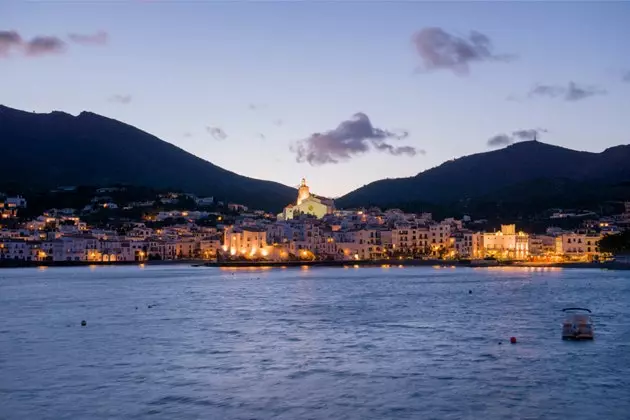
Cadaques at night.
From the moment that Cupid shot her arrows in Cadaqués, while she was still the lady of Eluard, Gala would forever be Dalí's muse , his wife, his accomplice and his fetish vehicle to channel much of his extravagance. And there was nothing that Dalí liked more than extravagances. So much so, that in an authentic act of a chivalrous novel she gave the Russian a medieval castle in a small town in Girona, Púbol , for her to do and undo as she pleased. Pure ideal of courtly love. Gala ruled her shelter and even to visit her she had to request an appointment in advance in writing and find a place in her packed list of lovers. A much more bureaucratic procedure than the one needed today to know the building where the last pinto workshop was installed r (moved in 1982, after Gala's death) and the eternal home of her muse (which has just opened after several months of reform). The interior continues almost as it did then, Itinerary for 10 days decorated with his predictable –and unpredictable– imaginary, in the form of impossible objects, from a Wagnerian fountain or some wading elephants to a stuffed white horse, a gift from the painter Joan Abelló for the muse of Dali.
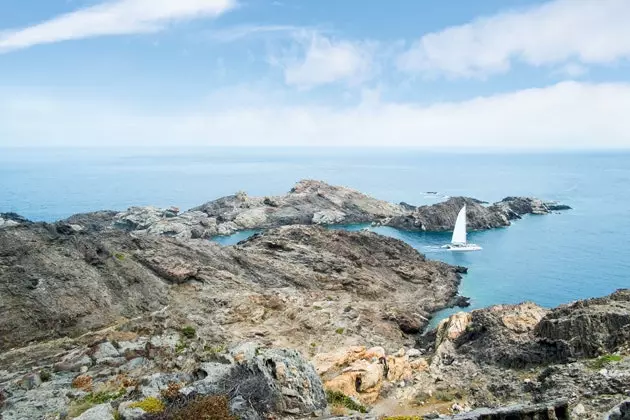
Sailboat between the beautiful cliffs of Cap de Creus
About the castle of Gala and what its thick walls saw –and remained silent– much has been speculated . More unnoticed, however, but documented, is what happened very close to here, in the Sanctuary of the Angels, in Sant Martí Vell , in 1958. Despite being only twelve kilometers from the capital, not many people from Girona know that Salvador Dalí and Gala secretly got married here . For a little over a year, a new and attractive reason has been added to travel those dozen kilometers of curves to the top: see the stars from the observatory that they have installed in one of the old rooms or with the enormous telescopes in the astronomical days that they organize in the open air (twice a week from May, maximum 20 people). The low light pollution and the height (485 m) favor good visibility, making it a perfect spot to recognize the constellations and learn about the stories of goddesses pregnant by a man and a god at the same time, brown dwarfs or “stars failed”, and legendary kites. The best time to do it is in summer, when the temperature is another attraction and can be combined with a dinner on the terrace or spend the night in the inn and wake up with the view of almost the entire province.
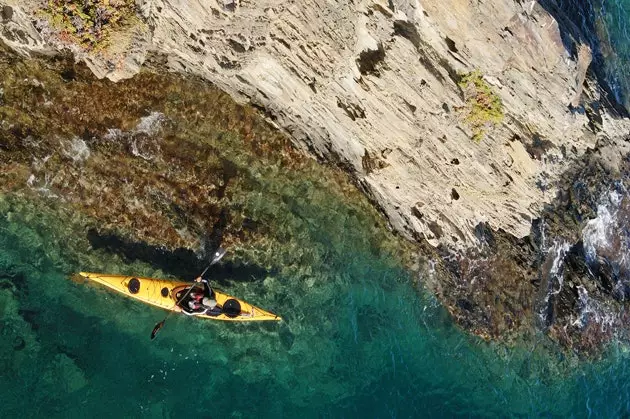
Kayaking in a cove on the Costa Brava.
Going down the opposite side of the mountain, in the direction of Madremanya, the path becomes shorter (there are only 5 km) and less winding. Once down, the stone seems to never end, be it in the form of small medieval towns such as Monells , with its beautiful arcaded square, or peratallada , a jumble of winding streets that connect the main square and the wall; or in the Iberian settlement of Ullastret , with its defensive watchtowers and the museum that explains the life of this civilization in the 6th century BC. Leaving for another time La Bisbal d´Empordá and Pals , we head towards the Mediterranean, the one that bathes the little towns of the Costa Brava and that marked the life and work of Salvador Dalí: Cadaqués, Portlligat and Cap de Creus , obligatory stopovers of this Dalinian triangle in Empordà lands.
From the top of the castle Torroella de Montgri, in the Montgrí mountain, where you can reach after a walk along a path in about an hour, the view can see the entire region. They look up the Medes Islands , the seven islets declared a reserve of marine flora and fauna, which are an amusement park for scuba divers where they can rub shoulders with colored fish in caves, go through tunnels and discover centuries-old wrecks.
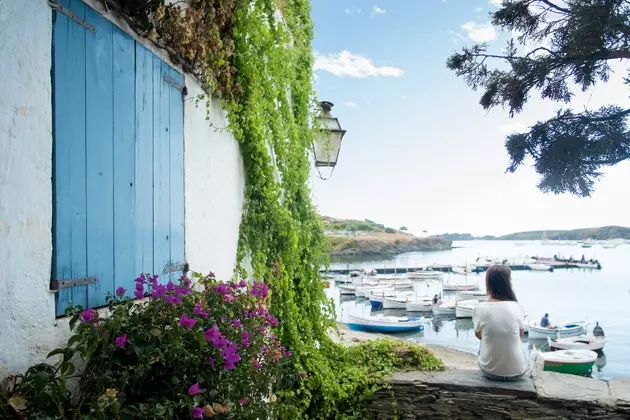
Cadaqués, a charming fishing village
Remains of ancient civilizations, but this time on land, they look better than anywhere else in Empuries , which was the gateway of the two classical cultures to the Iberian Peninsula in the 6th century BC: mosaics, altars, bases of shops where salted meats were already made and, the star, the statue of Aesculapius, the god of medicine (the copy, the original is in the museum), among olive trees and cypresses, and again with an eye on the Mediterranean. Nature forces us to make a stop in the Aiguamolls de l'Empordà Natural Park , a wetland full of ponds at the confluence of the Muga and Fluvià rivers that serves as a stopover and inn for hundreds of species of waterfowl. Whether with binoculars in hand, on foot or on horseback, on an ecokayak route, or even flying a kite on Sant Pere Pescador beach, the adventure is worth it.
Feeling like a bird is also possible in Empuriabrava (they call it the land of the sky for a reason), both literally, jumping with a parachute, and in a simulated way, in the wind tunnel, which makes us feel thousands of worms in the stomach, as if we were in free fall but without running no risk. After crossing the Natural Park, we now stop at Castello d'Empúries to see the Empordà Cathedral (which is actually the Gothic church of Santa María), before reaching roses . Today the town that gives its name to the gulf has become a thriving sun and sand holiday destination , but still its citadel, with Iberian, Greek and Roman ruins, speaks to anyone who wants to listen to it of what it was for centuries.
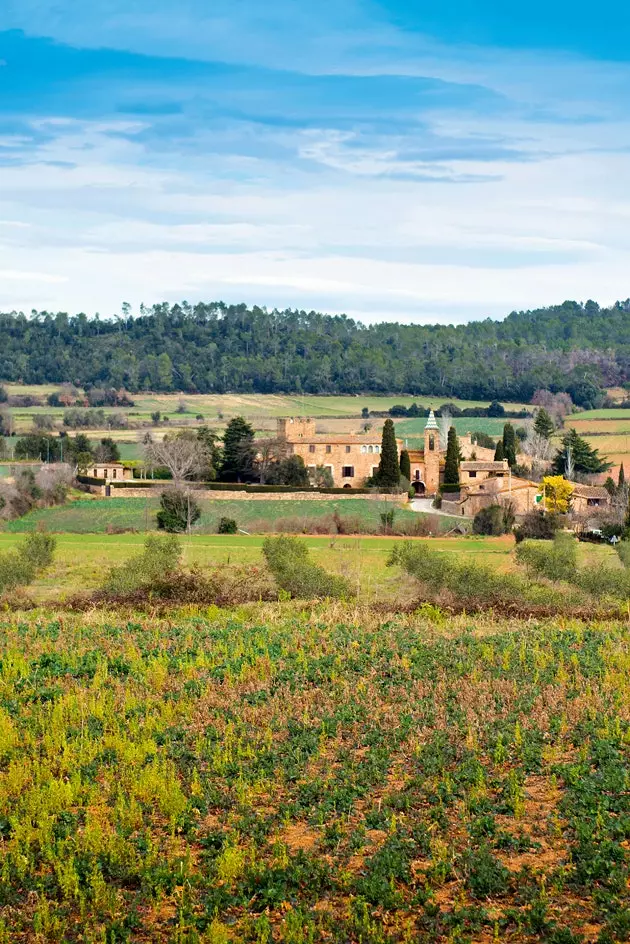
Les Gavarres and the Monasterio dels Àngels
From here the way to Cadaques it's already short. And always pleasant, whether it is done by road, crossing the rocky and windy Cap de Creus Natural Park , or by sea, sailing on a catamaran. Cadaqués is a picture of a manual, a town of white houses and a church whose tower stands out and harmoniously composes its portrait. But Cadaqués is much more than the icon of the Costa Brava, both on its own merits –its obvious beauty–, and because of a carom of fate, which made one of its inhabitants conceive a great genius of the 20th century. Salvador Dalí spent the summers of his childhood and adolescence in Cadaqués, getting drunk on his light from his landscape, and he always acted as a proud ambassador with his bizarre friendships. But soon the man who was successful in Paris and made film sets in Hollywood outgrew the little town and bought a series of fishermen's houses in the nearby bay of Portlligat, just fifteen minutes away on foot, to establish his home there and his workshop. His lair. The universe of him. A stuffed, jewel-laden polar bear welcomes you into the home and introduces us without hot cloths to the surrealist world of the painter, to his most private facet: his studio, his bedroom, his bathroom and the different rooms and convoluted gardens where everything intermingles without apparent order or concert, beyond of the disorder and bewilderment of the painter's mind.
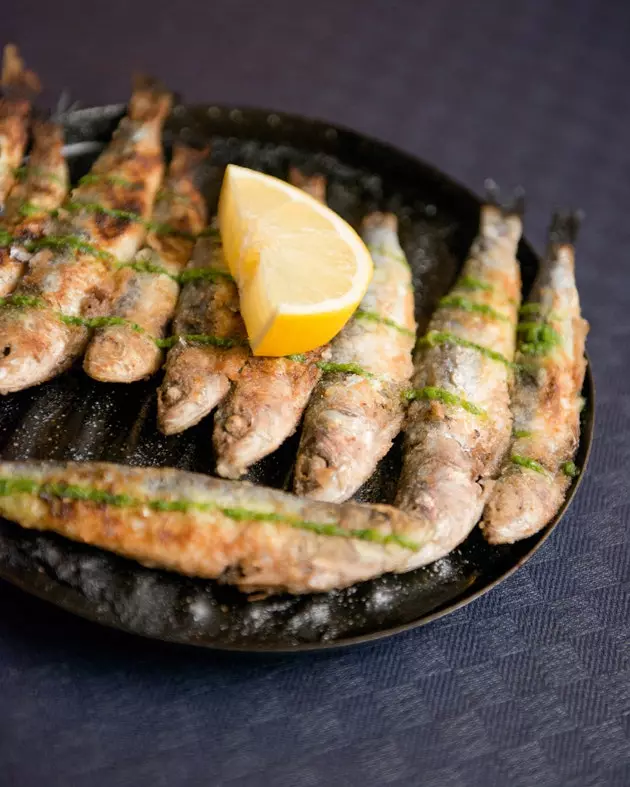
Cadaqués boasts a delicious gastronomy
In summer, from the beach itself and imitating Dalí's routines, you can catch a little boat to go to Cap de Creus , the alternative to the beautiful, winding and rocky road that leads to the lighthouse, through a landscape chiseled for centuries by the Tramontana wind, which whips bodies and minds hard. It was not the tireless wind but the Benedictine monks who built the other great stone attraction of the Cape, the hidden Monastery of Sant Pere de Rodes . Although the exterior and the views justify the detour, the surprise increases inside, especially in the church (dated between the 10th and 11th centuries), gigantic and bare.
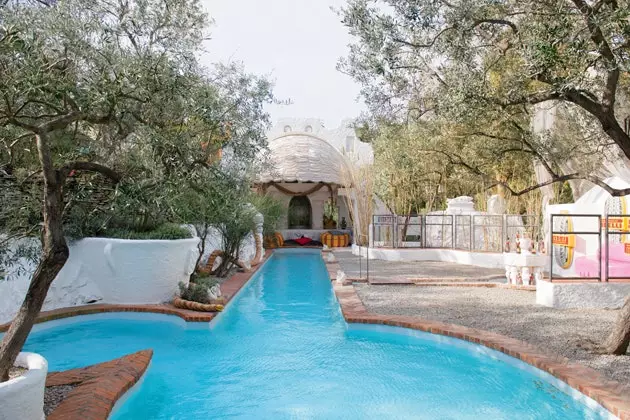
Swimming pool of the Dalí house museum in Portlligat.
Dalí's steps lead to Figueres , the beginning and the end of the adventure. The capital of L'Empordà has become one of the most touristic places in Catalonia, thanks to its main center of pilgrimage, the Teatre-Museu Dalí. Designed by himself to house a large part of his work on the remains of the old theater, the building is one quarter museum (with more than 1,500 works) and three quarters theater (100% entertainment): inside a hanging car flies over the heads of visitors and a room designed after his portrait of Mae West creates optical illusions. Abroad XXL dinosaur eggs crown the towers of a medieval castle decorated with typical L'Empordá rolls: a stage, a dream, an eternal refuge tailored to a mischievous demiurge with pointy mustaches, one of the greatest geniuses of the 20th century.
* This article has been published in Monographic number 80. Remember that, in addition to your usual kiosk and with the June issue, the monograph on Catalonia is on sale in digital format on Zinio .
*** You may also be interested in...**
- Three options to explore the heart of L'Empordà - The best beaches in the province of Barcelona - Lakes in Catalonia where you can swim this summer
- Top 10 Catalan towns
- Catalonia: a paradise of sea and mountains with the family
- The mountains are also for summer: From Ripollès to Montjuïc - Reasons not to leave Dolce Sitges
- The 40 photos that will make you want to spend the summer (all your life) on the Costa Brava
- Nine wineries one step away from the Costa Brava
- The Lower Ampurdán: a few hours in the Spanish Tuscany
- Five plans to enjoy Girona - Girona, here it was...
- Girona: kitchen at the stroke of landscape
- Nine wineries one step away from the Costa Brava
- All the articles of Arantxa Neyra
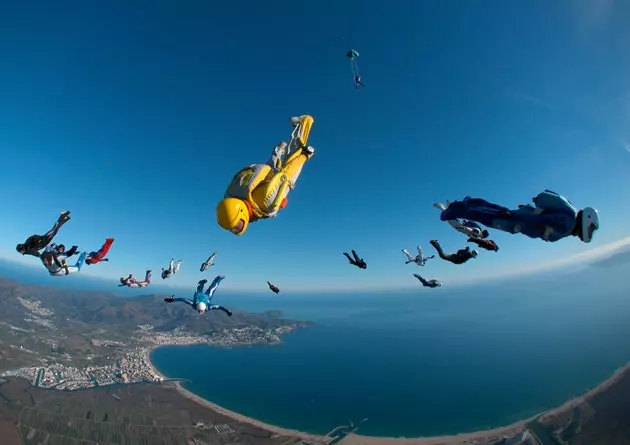
The Badia de Roses seen from the air
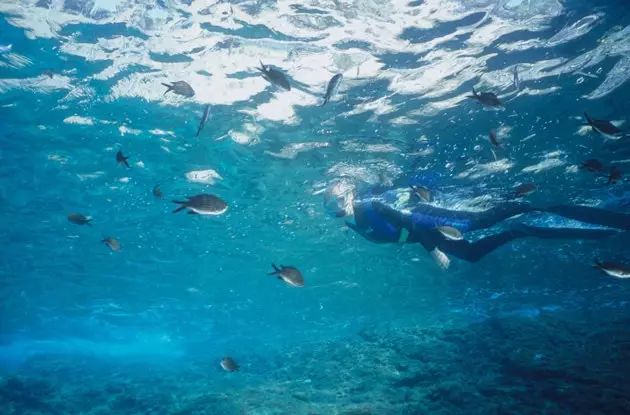
Snorkeling on the Costa Brava
